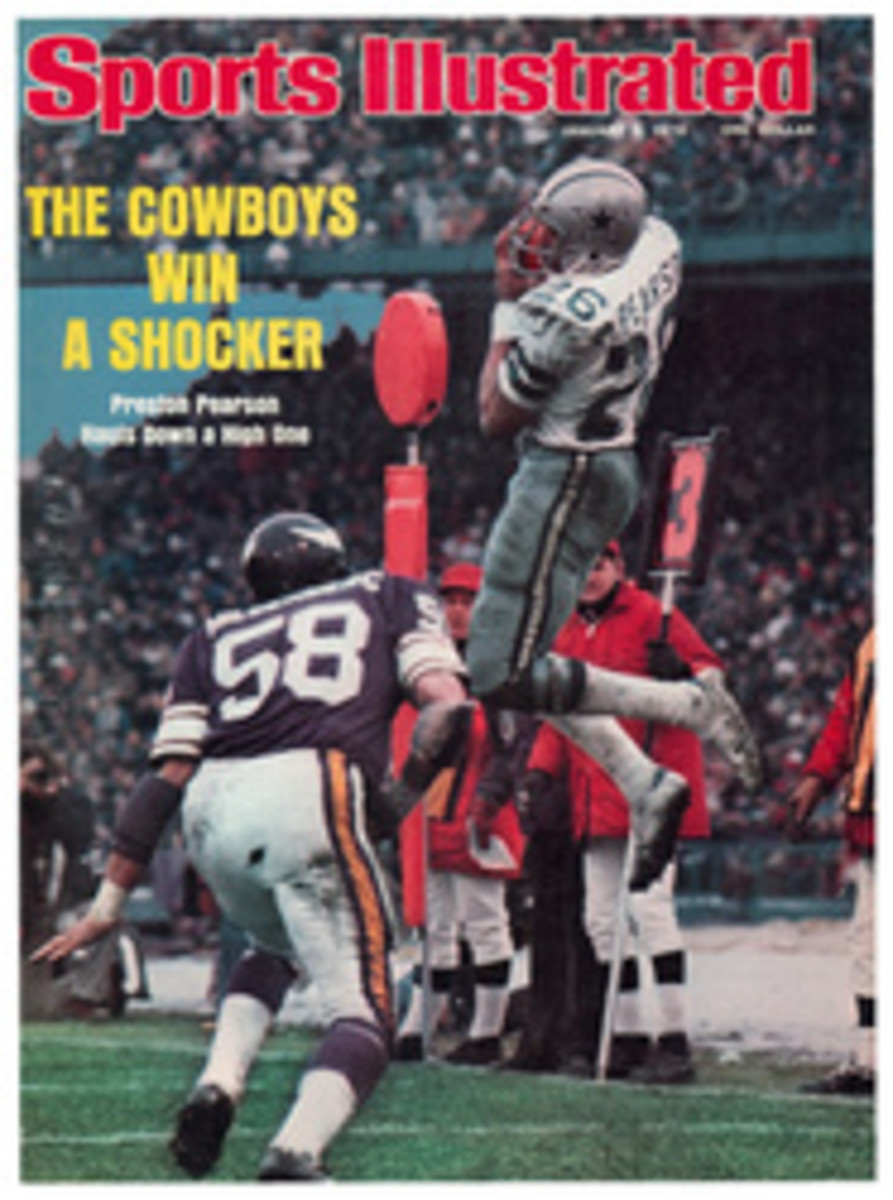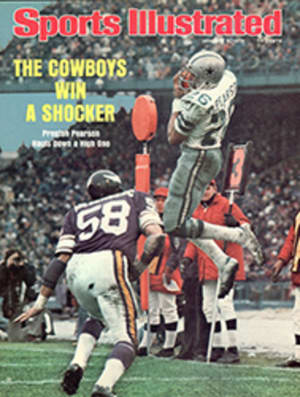
Honing the young blades
The cold comfort for U.S. speed skating is that, of about 100 Olympic-style racers in the nation, only a clutch can be considered world class. In addition, the only 400-meter rink in the western hemisphere is in West Allis, Wis., where the ice is often dirty and the weather worse than that. Put those two items together and it is perhaps understandable that when it came time to select the U.S. Olympic lineup last week, only a few folks came out to watch. Nevertheless—surprise—the speed skaters will be this country's strongest team at the Games next month in Innsbruck.
For such a little-noticed and uncelebrated discipline—Russia has some 300,000 speed skaters on the job—the sport has a steady history of paying off for the U.S. At Innsbruck in 1964 an unknown named Terry McDermott won the country's only Winter Games gold medal. In 1968 U.S. speed skaters collected five Olympic medals, and the 1972 Games at Sapporo produced Anne Henning and Dianne Holum, who snared two golds, a silver and a bronze between them. At the conclusion of last week's Trials, at least four of the prospects who survived are assuredly tough enough to fit the pattern.
For one thing, the oldtimers were on hand to make certain of it. McDermott, prosperous and slightly paunchy, was there as a referee. Holum has become an Olympic speed-skating coach, and child star Henning, now 20, showed up as perky as ever to practice being a TV color commentator. She confessed, out of earshot of those trying to make the team, that she has hardly stepped into skates since Sapporo. "I only do things that are fun now," she said. "I was sick of the work, the pressure and the schedule. I was so happy to be done with it."
Under examination on the ice were 48 competitors, racing in pairs against the clock, all sleekly streamlined in their skintight suits as though each had been hand-dipped in liquid nylon. Not only did they have to post the fastest times to make the team, but they also had to do so repeatedly at distances from 500 to 5,000 meters. The only exception was in the men's 10,000 finale, a grinding, 25-lap marathon that few wanted to repeat, Olympics or not. When the Trials were over, the field had melted down to seven men and eight women for the Olympic squad, although each nation is allowed to bring a team of 20 to the Games. "Nobody ever needs that many," said Jim Hawkins, chairman of the U.S. Olympic Committee for Speed Skating. "You have to take the best, and your best are usually the best in several events."
As expected by the experts and feared by the competitors, the best woman in the 500 and 1,000 turned out to be Sheila Young, whose docile demeanor hardly suits her role. That is, she appears gentle until the starter's gun—its blast turns her into a dynamo. Powering around the rink, she won four of the first five races. An oldtimer at 25, Young had missed the bronze medal in the 500 at Sapporo by just 8/100 of a second. Since then, she has stepped up her pace, becoming the only woman ever to win the sprint world championships in both skating and bicycle racing in the same year, 1973. Early in 1975 she captured the sprint-skating world title again in Sweden and won the bronze in the all-round world championship in Holland.
After hurrying through the Trials, Young assessed her position as the country's premier woman Winter Olympian, perhaps the one U.S. athlete, male or female, most likely to win a medal. "I'm not overconfident," she said. "But this year my big goal is to win at least one gold. I want the gold in the 500. I would also like to do well in the 1,000." What did that mean—do well? "It means win a medal," she said.
Skating on the team with Young will be another Olympian, 24-year-old Leah Poulos. The 1974 world sprint champion, she won three of the last four Trials races.
But if the top women were established international competitors, the best sprinter among the men turned out to be Peter Mueller, 21, who has never won a world championship. He swept seven out of nine races and broke his own national record in the 1,000. Just three weeks before the Wisconsin meet Mueller had burst upon the world-class skating scene with two surprising races in Berlin.
On Nov. 29 and 30, the last two days of an American training session in Germany, Berlin staged an international sprint competition and invited the top Russians, East Germans, West Germans, Dutch, Norwegians, Swedes and Canadians. When the last skate had flashed, Mueller and Sheila Young had emerged as the whiz kids of the meet. Young won the all-around with the lowest point score by placing second in three races and fourth in the last. "She has never skated so fast so early in the season," says Olympic Coach Peter Schotting. Mueller placed fifth and seventh in the 500s, but in both 1,000-meter races—a new Olympic event for the men—he beat all the heavy-thighed Europeans, including world-record holder Valeri Muratov of the U.S.S.R. This was no small feat, since Mueller remains a comparative whippet despite diligent weight-lifting. His 1:19.62 in one of the 1,000s was the fastest ever skated at sea level—low ice, the skaters call it—where times are slower because of greater air resistance. Last week in Wisconsin, he cut it down to 1:19.29. "You can train and train for years," says Mueller, "and all of a sudden everything falls into place."
The Russian sprinters who fell to Mueller had come from their training center at Alma Ata, 4,800 feet up in the Pamir Mountains, a $25 million Shangrila of a rink that is the fastest in the world. In their national championships there last March, the Russians broke every skating world record except two still held by Ard Schenk, the superb Dutch racer who won three gold medals in 1972. Sheila Young's 500-meter record fell at Alma Ata, where no American has ever been allowed to skate a stroke. But, Shangri-la times notwithstanding, Tatjana Averina, who now holds the marks at 500, 1,000 and 1,500, has never defeated Young in a competitive 500 or 1,000. At the International Skating Union convention in Munich last summer George Howie, the president of the USISA, asked the Russian delegate, "When will you invite us to Alma Ata?" "Soon," the Russian replied, but that "soon" has not come yet.
Keeping it in the skating family, Mueller is engaged to Poulos. "I knew Peter when we were kids racing packstyle," Leah says. "He was the boy who won everything. The others were afraid of him. I thought he was a daredevil, but I found out that he is a very thoughtful person. He never does or says anything without thinking about it first."
Another thinking skater to emerge from the West Allis pack was Dan Carroll, a 26-year-old powerhouse who is built like Ard Schenk. "He could be Schenk already, if he hadn't quit for two years," says Coach Schotting. That was after the 1972 Olympics, where Carroll finished seventh in the 1,500, 10th in the 5,000 and ninth in the 10,000. "I was burned up," he says. "That's why I quit." But in the summer of 1974, 20 pounds overweight, he joined a training session. "I couldn't even beat the women in a half mile," he recalls. "It hurt just bending over to tie my shoes. But it was a challenge to come up from the bottom and hit the top again."
In the 1975 world championship Carroll won a silver medal in the 1,500; he won a bronze in the 1,000 at the 1975 world sprint meet. It was the fastest comeback most speed skaters can remember. Last week Carroll continued to train right through the Trials—doing his 20-lap warmups regularly—and still won one 1,500, two 5,000s and the 10,000, lowering track records in all three events. And he grumbled, "I didn't have any snap in my legs."
Thus assembled, the team took off immediately for pre-Olympic European races. Going along with the stars were a few kids who gave a special excitement to the whole scene. "We never had such a load of talent," says McDermott, referring to youngsters such as Dan Immerfall, Jim Chapin, Nancy Swider and Eric and Beth Heiden. Beth is a 4'11", 85-pound mite who qualified in the 3,000. There were times when Coach Holum feared that the wind might blow Beth off the West Allis rink over into the shuttered stalls of the adjacent state fairgrounds, and heaven only knows what an Olympic gust might do in Innsbruck, but the youngster is not worried. "Speed skating is so nice and smooth when the ice is really fast," she says. "I feel like I'm flying." She flew in West Allis. The whole team did.
PHOTO
SHEILA YOUNG: NEVER LOOKED BETTER
PHOTO
PETER MUELLER: NEVER BEEN NOTICED

